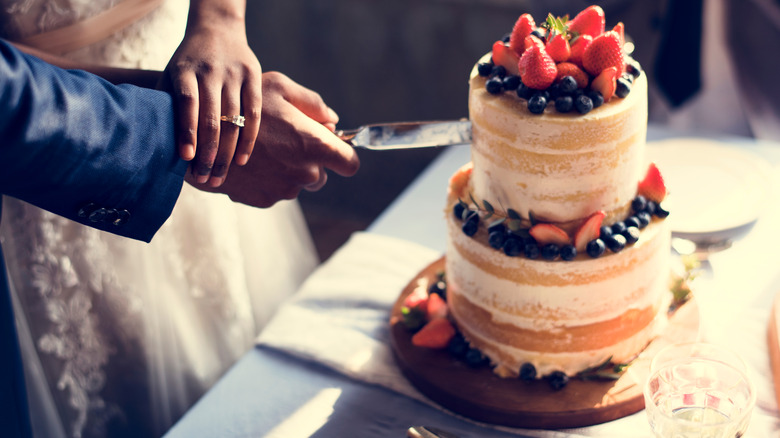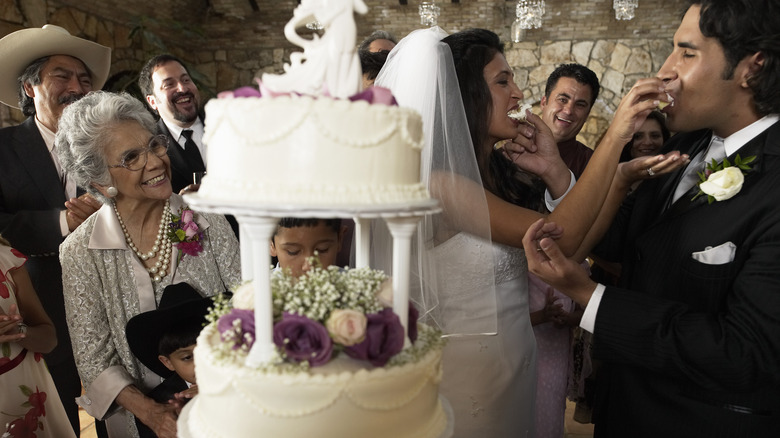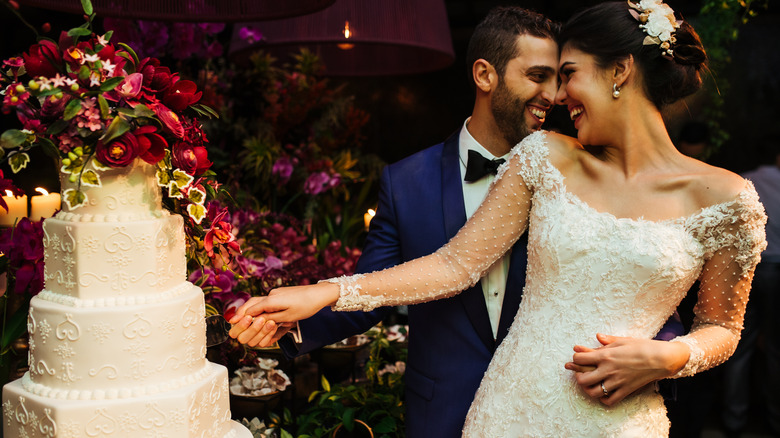Wedding Cakes Have Been Around For A Lot Longer Than You Think
There are numerous wedding traditions that you could easily write off as being too boring or too dated. Fortunately, the importance of a wedding cake is still well established — could it even be a wedding without a cake?! Whether you're on a budget and choose to make your own wedding cake or splash out on the most decadent and elaborately decorated one, this item is a fixture on most wedding to-do lists. But, has this always been the case? It certainly seems so because wedding cakes have been around for a lot longer than you think. In fact, they date back to the ancient Romans.
While the idea of a celebratory, cake-like dessert is certainly an age-old tradition, its iterations have changed drastically over the years. Even today, the sheer number of choices offered for flavor and design can be overwhelming. So great is the variety of wedding cake designs out there that people can even predict what your wedding cake says about you as a person. Having said that, you may be curious to learn more about the fascinating history and evolution of this beloved treat.
How and where wedding cakes originated
The tradition of serving a bread-based dessert to celebrate a wedding first began in ancient Rome. Here, a cake made from wheat or barley would be broken above the head of the bride, as it was believed this measure would bring her good fortune and bless her with fertility. Once the bread was broken, the couple would eat the bread as their first act together while encouraging their guests to eat the crumbs for luck.
Over time, the practice spread from the Romans to the English. By the 17th century, a "bride's pye" served at weddings called for cock's combs, pine kernels, lamb testicles, more unusual ingredients, and spices in a pastry filling. As unappetizing as this dish may sound, it was an important part of the wedding ceremony. The dish was eaten as a harbinger of good luck for the newly wedded couple, and these cakes would also sometimes contain a ring. Finding the ring was thought to be a prediction of marriage, similar to the tradition of tossing the bouquet at modern weddings.
How the modern wedding cake came about
Things took a turn for the sweeter once sugar became more easily accessible. This led to the eventual creation of wedding cakes as we know them today. It also established the tradition of white-colored wedding cakes, as the highest quality of sugar would ensure white batter and frosting, which, like the dress, symbolizes the purity of the bride.
It is believed that the tradition of having tiered wedding cakes began in the late 1700s when a baker's apprentice created a beautiful approximation of St. Bride's Church to impress his lady love. However, it was Queen Victoria's wedding cake, which weighed a whopping 300 pounds, that popularized the concept of tiered, white wedding cakes. Queen Elizabeth II's cake then beat hers by weighing 500 pounds. In this day and age, even these extravagances may not sound like much in the face of many over-the-top wedding cakes!


